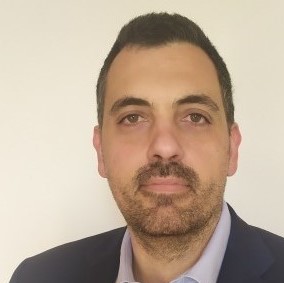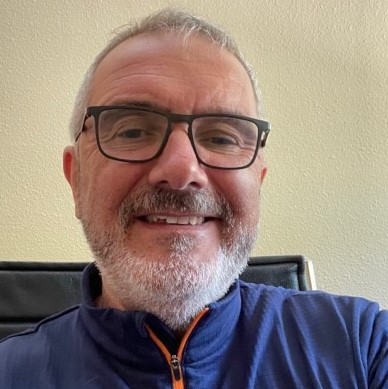The panel will investigate current developments on establishing separation minima and how ATM-UTM interface and boundaries will appoint correct responsibilities for ensuring the safety of operations in a mixed environment.
Moderator

Mr. Eugenio Diotalevi - Remotely Piloted Aircraft Task Force Coordinator, IFATCA
Mr. Diotalevi has been an air traffic controller since 2003 and he's currently employed in Padova ACC (Italy). Within IFATCA. He was nominated as Remotely Piloted Aircraft Task Force Coordinator in 2019 and, since September 2021, he has been a Member of the ICAO RPASP representing IFATCA. He has been on the Executive Board of ANACNA, the Italian Air Traffic Controller Association, since 2016, and at present, he’s the Director of the Foreign Affairs Office.
Speakers

Mr. David Perks - IFATCA Professional Legal Committee Chair and ICAO SESP
Mr. Perks began his aviation
career as an air traffic controller over 30 years ago. He is still
employed by Australia's air navigation service provider, Airservices Australia,
with his substantive role now being to develop and maintain the ATC ruleset. Mr
Perks also Chairs the International Federation of Air Traffic Control Associations'
(IFATCA) Professional & Legal Committee & ICAO's Separation and Airspace
Safety Panel (SASP).

Mr. Francis Kigen - Senior UAS Inspector, Kenya CAA
Mr. Kigen is currently a UAS
Inspector, trained Air traffic controller with three ratings, Aerodrome, Approach
procedural and approach Radar, Commercial pilot license holder fixed wing,
Trained Aeronautical information officer and Remote pilot holder.

Mr. Harrison Wolf - Director, Global Aviation Policy, Zipline
iMr. Wolf s the Director for Global Aviation with Zipline. Prior to Zipline he
led aerospace and drone projects with the World Economic Forum focused on
advancing progressive regulations that enable a risk-based approach. He served
on the ICAO Task Force for UAS in Humanitarian Aid and Development. Harrison
co-founded
and continues to teach the Safety Management Systems for Remotely Piloted
Aircraft course at the University of Southern California Aviation Safety &
Security Program which uses the text book he authored entitled Drones: Safety
Risk Management for the
Next Evolution of Flight.

Mr. Juan Villa Carbò - Professor at Department of Computing Engineering , Universitat Politècnica de València, Member of SESAR Project BUBBLE
Mr. Carbò has a PhD Industrial Engineer from Polytechnic University of Valencia (UPV), Spain. In 1986, he joined the Department of Computing Engineering, UPV, where in 2002 became full professor. He has promoted and coordinated the kick off of the Air Navigation degree at UPV. His current research interests are focused on ATM navigation procedures and U-space, especially mission planning and risk and safety assessments. He has authored and co-authored 70 papers in refereed conferences and journals and has participated in 30 research projects funded by the European Commission and by the Spanish National and Regional bodies, as well as in more than 10 research contracts with companies. In addition, Professor Vila-Carbó has been research fellow at the Georgia Institute of Technology, in the USA. Currently, he actively participates in WG105-SG3 (Detect and Avoid -DAA) of EUROCAE and in SC-147 of RTCA.
He has a total of four research periods approved by the Spanish CNEAI.
